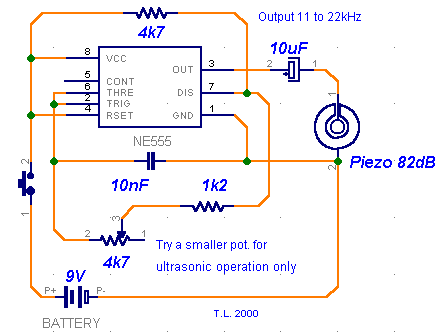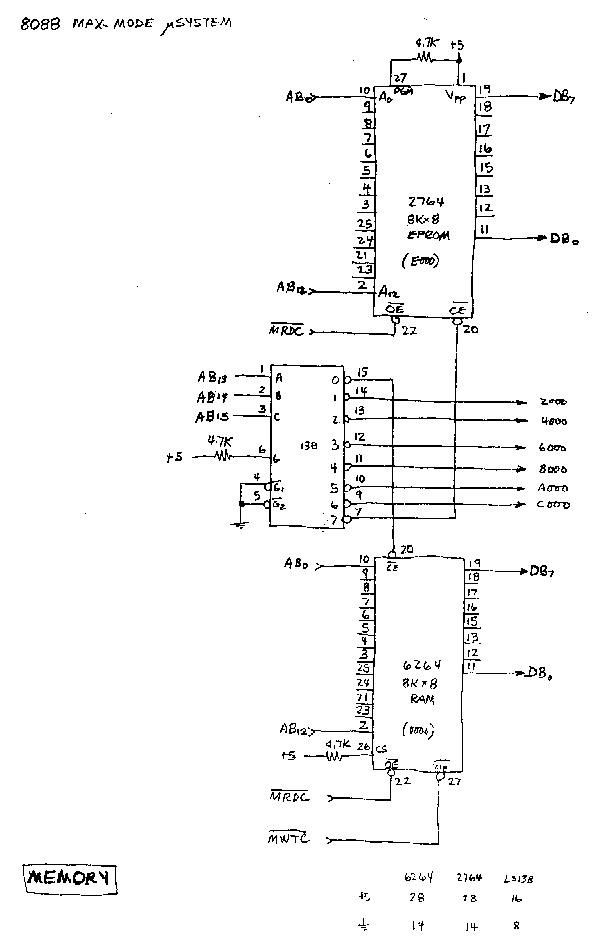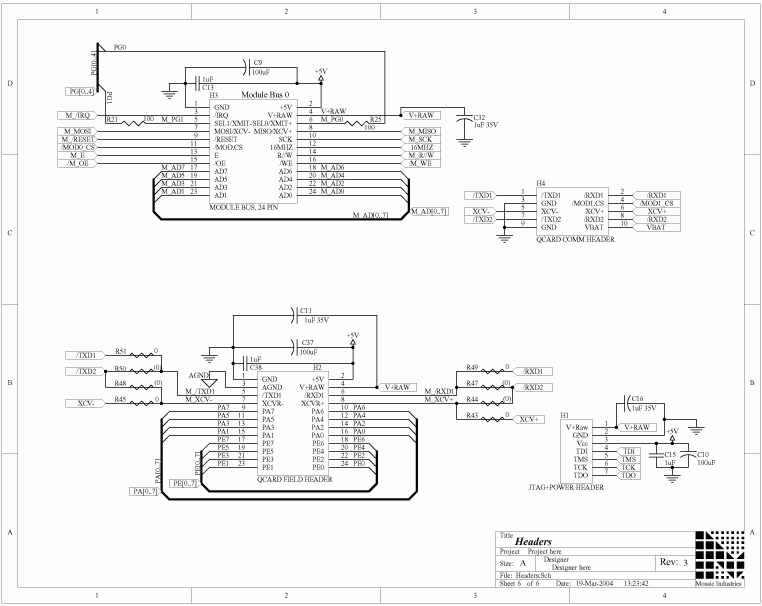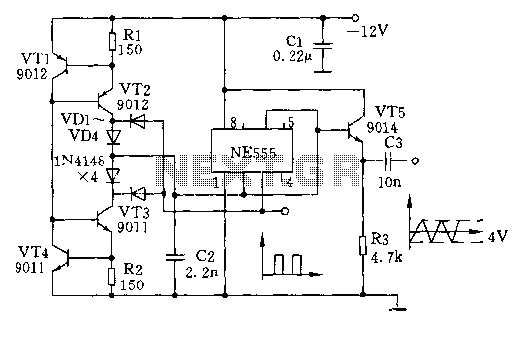
High-accuracy ultrasonic range measurement system because of ߀?s C OS and ARM processor
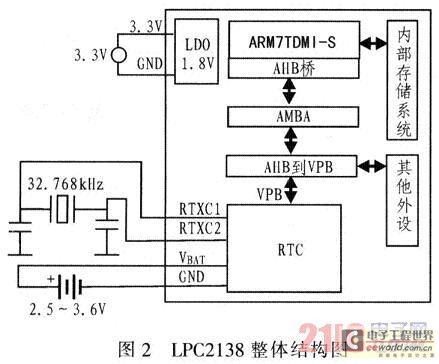
The mobile robot is designed to operate in unknown and uncertain environments, featuring autopilot capabilities while avoiding obstacles. It utilizes ultrasonic sensors for range finding due to their simplicity, speed, and cost-effectiveness in information processing. These sensors facilitate functions such as obstacle avoidance, positioning, environmental modeling, and navigation. Ultrasonic waves propagate in a straight line at a frequency that is high and exhibits strong reflective properties. The sound travels at a velocity of 340 m/s in air and is relatively unaffected by environmental conditions. The ultrasonic sensor operates within a frequency range of 20-400 kHz, with a common operational frequency of 40 kHz in air. The piezoelectric ultrasonic generator consists of two piezoelectric crystal plates and a sound board. When a pulse signal is applied to its electrodes, resonance occurs in the crystal plates, causing the sound board to vibrate and emit ultrasonic waves. Conversely, when no voltage is applied, the sound board receives ultrasonic waves, compressing the piezoelectric crystal plates and converting mechanical energy into an electrical signal, thus functioning as an ultrasonic receiver. When the ultrasonic transmitter emits waves, timing begins. Upon encountering an obstacle, the waves are reflected back, and the receiver stops timing. The speed of sound in air allows for distance calculation based on the round trip time of the ultrasonic signal, following the formula: s = 340t/2. The system operates on a C/OS-II operating system and is divided into four functional modules: the back wave A/D gathering module, the LED display and key processing module, the LCD display module, and the data processing module for alarms, storage, and serial communication. The back wave A/D gathering module samples and retains real-time data, while the LED and key processing module processes the sampled data into meaningful parameters for display. The LCD display module presents various parameters visually, and the data processing module handles real-time data correspondence. The system design is supported by an LPC2138 microcontroller with 512 KB of embedded Flash memory, along with extensive resources, including two 32-bit timers, two 10-bit A/D converters, and one 10-bit D/A converter.
The mobile robot employs a sophisticated ultrasonic range-finding system that enhances its navigational capabilities in diverse environments. The ultrasonic sensors, which are integral to the robot's functionality, operate by emitting high-frequency sound waves and measuring the time taken for the echoes to return after striking an obstacle. This round-trip time measurement is critical for accurately determining the distance to nearby objects, allowing the robot to navigate safely and efficiently.
The piezoelectric ultrasonic generator is a key component of the sensor system. It utilizes piezoelectric crystals that, when electrically stimulated, resonate at a specific frequency, producing ultrasonic waves. This mechanism is efficient and responsive, enabling rapid data acquisition and processing. The dual functionality of the piezoelectric elements—acting as both transmitter and receiver—maximizes the sensor's utility in real-time applications.
The system architecture is modular, which enhances maintainability and scalability. Each functional module serves a distinct purpose, from data acquisition to user interface display. The back wave A/D gathering module is responsible for capturing the ultrasonic return signals and converting them into digital data for further processing. The LED display and key processing module allows for user interaction, providing feedback on system status and facilitating user inputs. The LCD display module serves as the primary interface for presenting navigational data and sensor readings, ensuring that operators can easily monitor the robot's environment.
The data processing module integrates alarm systems and communication protocols, ensuring that critical information is relayed to the operator in real-time. This modular approach, combined with the robust capabilities of the LPC2138 microcontroller, allows for efficient processing and management of the robot's functions, ensuring reliable operation in unpredictable environments.
In conclusion, the mobile robot's design leverages advanced ultrasonic sensing technology, a modular software architecture, and a powerful microcontroller to achieve autonomous navigation and obstacle avoidance in complex environments. The system's ability to process real-time data and respond dynamically to its surroundings showcases the integration of electronics engineering principles in robotics applications.The mobile robot should run under the unknown and uncertain environment, must possess autopilot and avoid hindering the function. The ultrasonic static is used as the range finding sensor of the mobile robot extensively with its characteristic simple, fast with of low price in information processing, realize that avoids functions such as hindering, positioning,
environmental modeling and navigation, etc. Supersonic wave is a propagation mode of the straight line, the frequency is high, reflecting capacity is strong. Its propagation velocity is 340 m/ s in the air, easy to control, is slilghtly influenced by environment.
So the sensor of unexpected turn of of adopting and having children outside the state plan is as what the distance is surveyed Eyes , Can be used for the ultrasonic frequency band with frequency of 20- 400 kHz of the range finding field, it is 40 kHz to be daily in the air medium. The piezoelectric type ultrasonic generator utilizes crystalline syntony work of piezoelectricity in fact.
The internal structure of the ultrasonic generator has 2 piezo-electric crystal plate and a sound board. When the extra pulse signal of two electrodes of it, its frequency means the inherent oscillating frequency of the piezo-electric crystal plate, the resonance will take place in the piezo-electric crystal plate, and will drive the sound board to shake and produce supersonic wave.
On the contrary, if two inter-electrode not applied voltage, when the sound board has received supersonic wave, will oppress the piezo-electric product slice and shake, change the mechanical energy into the electric signal, become the ultrasonic receiver at this moment. To some one party to launch supersonic wave, begin to time while launching ultrasonic transmitter, supersonic wave travel in air, meet obstacle recycle back to immediately right away.
The ultrasonic receiver receives the backward wave and stops timing immediately, the propagation velocity of supersonic wave in the air is 340 m/ s. In the system, ultrasonic range finding adopts the way of measuring ultrasonic round trip time. Because the length is proportional to distance that the sound passes, when the ultrasonic emitter sends out a transient pulse wave, time to begin; Stop immediately when the ultrasonic receiving end is received after the 1st returns to the wave pulse, count.
According to time t that the time-recorder is recorded, the computable distance from obstacle s of launching point, Namely: s =340t/ 2. This is the so-called mistiming distance measuring method. This system adopts C/ OS-lI operating system, the system divides software into 4 pieces of function module: The back wave A/D is gathered the module, LED reveals and key set puocessing module, LCD display module, calling the police, store and serial port puocessing module.
Among them, back wave A/D gather the module and use for sampling, keeps the real time data; LED reveals and key set puocessing module is used for dealing with the sampled data, and convert it to parameter with actual meaning: LCD display module reveals various parameters in LED; And call the police, store and the serial port puocessing module is mainly the corresponding data of real-time processing. Fig. 1 is the overall block diagram of system design. RAM of LPC2138 Flash memorizer and 32 KB at a high speed embeded with 512 KB, has abundant having resources outside: 2 32-bit microcomputer timers tape catch, compare the passway, 2 10 8 converter, A/ D of No.
, 1 10 the intersection of D/ A and converter, the intersection of 🔗 External reference
The mobile robot employs a sophisticated ultrasonic range-finding system that enhances its navigational capabilities in diverse environments. The ultrasonic sensors, which are integral to the robot's functionality, operate by emitting high-frequency sound waves and measuring the time taken for the echoes to return after striking an obstacle. This round-trip time measurement is critical for accurately determining the distance to nearby objects, allowing the robot to navigate safely and efficiently.
The piezoelectric ultrasonic generator is a key component of the sensor system. It utilizes piezoelectric crystals that, when electrically stimulated, resonate at a specific frequency, producing ultrasonic waves. This mechanism is efficient and responsive, enabling rapid data acquisition and processing. The dual functionality of the piezoelectric elements—acting as both transmitter and receiver—maximizes the sensor's utility in real-time applications.
The system architecture is modular, which enhances maintainability and scalability. Each functional module serves a distinct purpose, from data acquisition to user interface display. The back wave A/D gathering module is responsible for capturing the ultrasonic return signals and converting them into digital data for further processing. The LED display and key processing module allows for user interaction, providing feedback on system status and facilitating user inputs. The LCD display module serves as the primary interface for presenting navigational data and sensor readings, ensuring that operators can easily monitor the robot's environment.
The data processing module integrates alarm systems and communication protocols, ensuring that critical information is relayed to the operator in real-time. This modular approach, combined with the robust capabilities of the LPC2138 microcontroller, allows for efficient processing and management of the robot's functions, ensuring reliable operation in unpredictable environments.
In conclusion, the mobile robot's design leverages advanced ultrasonic sensing technology, a modular software architecture, and a powerful microcontroller to achieve autonomous navigation and obstacle avoidance in complex environments. The system's ability to process real-time data and respond dynamically to its surroundings showcases the integration of electronics engineering principles in robotics applications.The mobile robot should run under the unknown and uncertain environment, must possess autopilot and avoid hindering the function. The ultrasonic static is used as the range finding sensor of the mobile robot extensively with its characteristic simple, fast with of low price in information processing, realize that avoids functions such as hindering, positioning,
environmental modeling and navigation, etc. Supersonic wave is a propagation mode of the straight line, the frequency is high, reflecting capacity is strong. Its propagation velocity is 340 m/ s in the air, easy to control, is slilghtly influenced by environment.
So the sensor of unexpected turn of of adopting and having children outside the state plan is as what the distance is surveyed Eyes , Can be used for the ultrasonic frequency band with frequency of 20- 400 kHz of the range finding field, it is 40 kHz to be daily in the air medium. The piezoelectric type ultrasonic generator utilizes crystalline syntony work of piezoelectricity in fact.
The internal structure of the ultrasonic generator has 2 piezo-electric crystal plate and a sound board. When the extra pulse signal of two electrodes of it, its frequency means the inherent oscillating frequency of the piezo-electric crystal plate, the resonance will take place in the piezo-electric crystal plate, and will drive the sound board to shake and produce supersonic wave.
On the contrary, if two inter-electrode not applied voltage, when the sound board has received supersonic wave, will oppress the piezo-electric product slice and shake, change the mechanical energy into the electric signal, become the ultrasonic receiver at this moment. To some one party to launch supersonic wave, begin to time while launching ultrasonic transmitter, supersonic wave travel in air, meet obstacle recycle back to immediately right away.
The ultrasonic receiver receives the backward wave and stops timing immediately, the propagation velocity of supersonic wave in the air is 340 m/ s. In the system, ultrasonic range finding adopts the way of measuring ultrasonic round trip time. Because the length is proportional to distance that the sound passes, when the ultrasonic emitter sends out a transient pulse wave, time to begin; Stop immediately when the ultrasonic receiving end is received after the 1st returns to the wave pulse, count.
According to time t that the time-recorder is recorded, the computable distance from obstacle s of launching point, Namely: s =340t/ 2. This is the so-called mistiming distance measuring method. This system adopts C/ OS-lI operating system, the system divides software into 4 pieces of function module: The back wave A/D is gathered the module, LED reveals and key set puocessing module, LCD display module, calling the police, store and serial port puocessing module.
Among them, back wave A/D gather the module and use for sampling, keeps the real time data; LED reveals and key set puocessing module is used for dealing with the sampled data, and convert it to parameter with actual meaning: LCD display module reveals various parameters in LED; And call the police, store and the serial port puocessing module is mainly the corresponding data of real-time processing. Fig. 1 is the overall block diagram of system design. RAM of LPC2138 Flash memorizer and 32 KB at a high speed embeded with 512 KB, has abundant having resources outside: 2 32-bit microcomputer timers tape catch, compare the passway, 2 10 8 converter, A/ D of No.
, 1 10 the intersection of D/ A and converter, the intersection of 🔗 External reference
